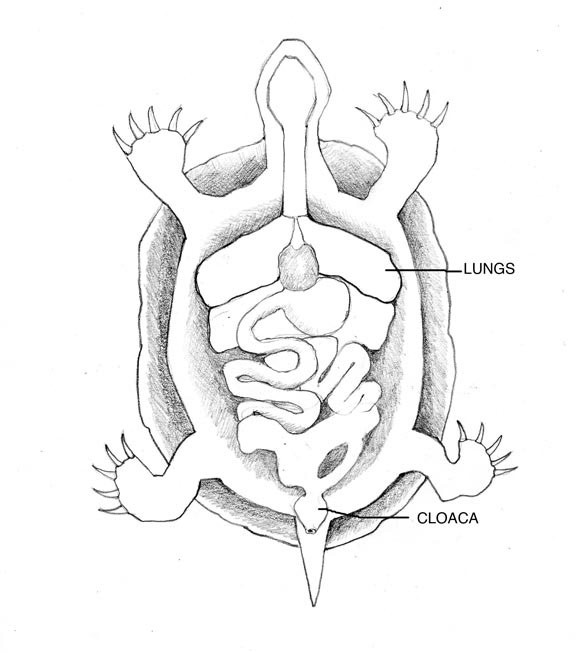
With April turning to May, Vermont and New Hampshire turtles are getting ready for the summer ahead as they begin to appear at the surface of ponds. After spending the long winter hibernating in bottom mud, they are slow to awaken. That is just as well for the moment, because many species are primarily vegetarian, and pond plants are just beginning to grow. The carnivorous snapping turtle and eat-anything musk turtle may be finding early nourishment, but most of the others must wait—though I have seen plant-eating species snack on worms and soft-bodied insects when an opportunity presented itself.
Of the seven turtle species residing in Vermont and New Hampshire, only two are safely established: the snapping turtle and the eastern painted turtle. When it comes to this part of northern New England, the other five are considered threatened or endangered.
As northerners our turtles must contend with frigid winters. Unable to maintain the necessary body temperature to carry out essential metabolic activities, a turtle has a heart rate that slows to almost nothing, and its organ systems more or less shut down.
Finding food in winter is clearly impossible, so the only source of energy for maintaining minimal metabolism is rich body fat that was stored in the previous summer season of plenty.
Survival is furthermore threatened when turtles’ freshwater pond habitat freezes over. An icy ceiling overhead means an end to breathing air at the surface, and the only place to go is to the bottom of the pond for a long winter’s sleep.
Hibernating turtles don’t move or breathe, but they do need a minimal amount of energy to remain alive. Somehow that stored fat has to be metabolized over an extended time, but without oxygen freely available, what to do?
The pond turtle’s answer is unmatched in degree by any other animal. Modifications to its hibernating life style allow it to survive four or five months without breathing.
One problem with metabolizing fat in the absence of oxygen is that the process creates lactic acid, and when too much of this acid builds up and results in a condition known as acidosis, it can be fatal to an animal. How to prevent this?
One byproduct of anaerobic metabolism is lactic acid, and when too much of this acid builds up and results in a condition known as acidosis, it can be fatal to an animal. How to prevent this?
A pond turtle finds a remedy in its shell and skeleton, which together account for over a third of the animal’s weight. The shell of a turtle is not just for protection—being heavy it also helps with buoyancy control by counteracting the air-filled lungs, and it acts as a hydrofoil when the animal swims.
For hibernating turtles the shell also is vitally important in a chemical sense. Just as we take buffering tablets, like Tums, to relieve an acid stomach, a hibernating turtle uses its shell and bone, composed of limy compounds, to release carbonates into its increasingly acidic body fluids. This buffers the acid build-up in a non-breathing turtle, while it snoozes down in the oxygen-less mud of a winter pond. Deadly acidosis in the animal’s tissues is prevented. Furthermore the shell stores accumulations of this buffered lactic acid where it can do no harm. So a turtle could not survive were it not for the shell’s contributions.
In effect a hibernating turtle is a closed system independent of the environment, an extraordinary feat of biochemical juggling that allows metabolism to continue throughout winter.
But wait. There’s more.
All reptiles (also amphibians and birds) have a sizeable rear opening called a cloaca. It is a common, muscular chamber into which the rectum, urinary and reproductive systems empty. It serves as a mating and egg-laying opening, as well as one through which urinary and digestive wastes escape into the surrounding water. It’s a good design that has served these animals well for millions of years.
The cloaca of some kinds of freshwater turtles, such as our eastern painted turtle, has fingerlike extensions that are abundantly supplied with blood vessels. The muscular walls of the cloaca contract and relax forcing water in and out of the chamber. If a painted turtle hibernates in a pond where some dissolved oxygen is available, the cloaca will serve as a respiratory device. As a substitute “lung,” the cloaca allows for the transfer of oxygen and carbon dioxide between animal and the surrounding water.
Only certain turtles have this ability, but those that do carry on oxygen-fueled metabolism under low-oxygen conditions. The world champion is an Australian river turtle that breathes through its rear end almost all the time. It’s a “bum breather,” as the Aussies say.


Discussion *